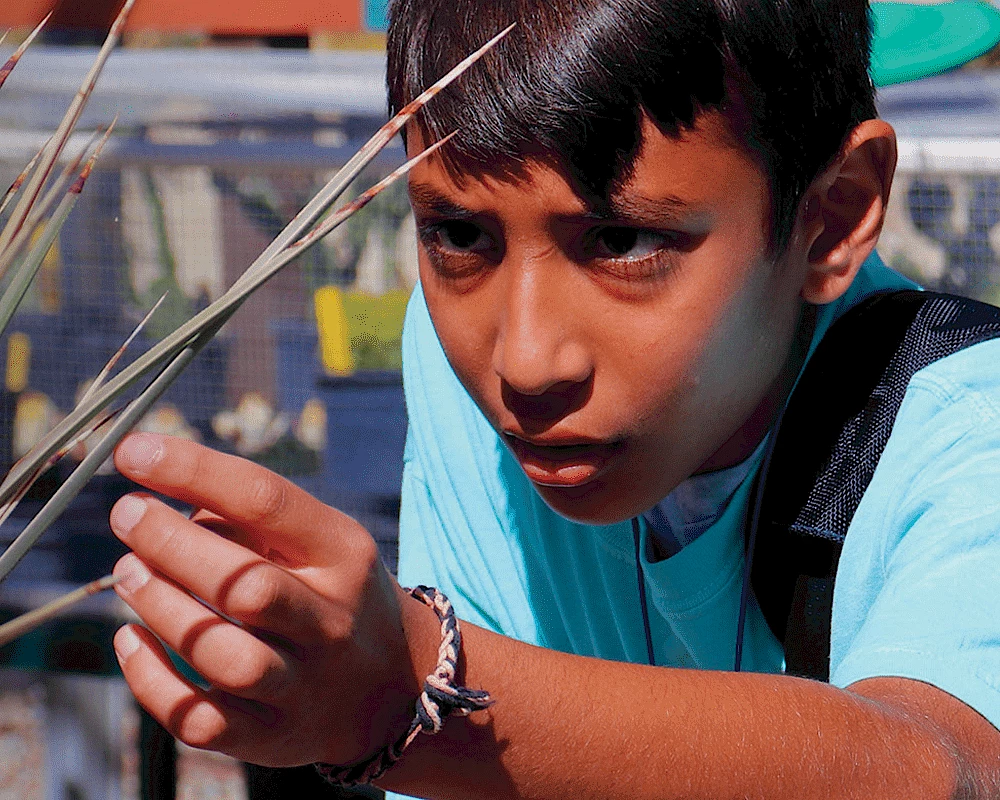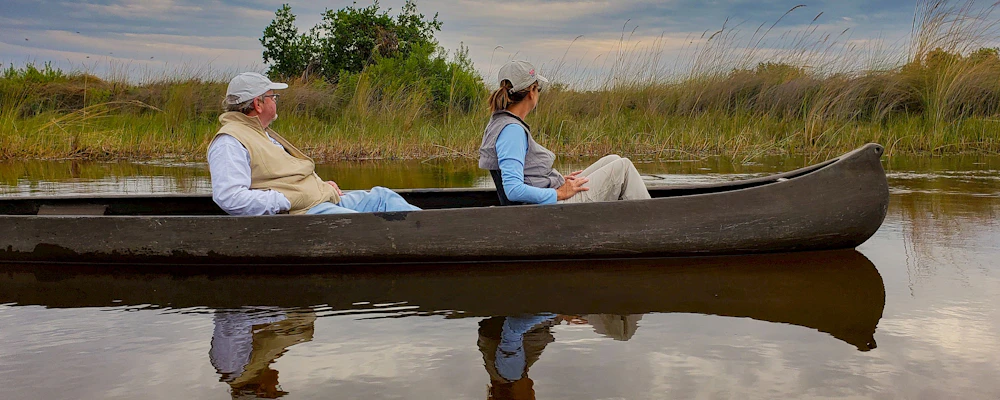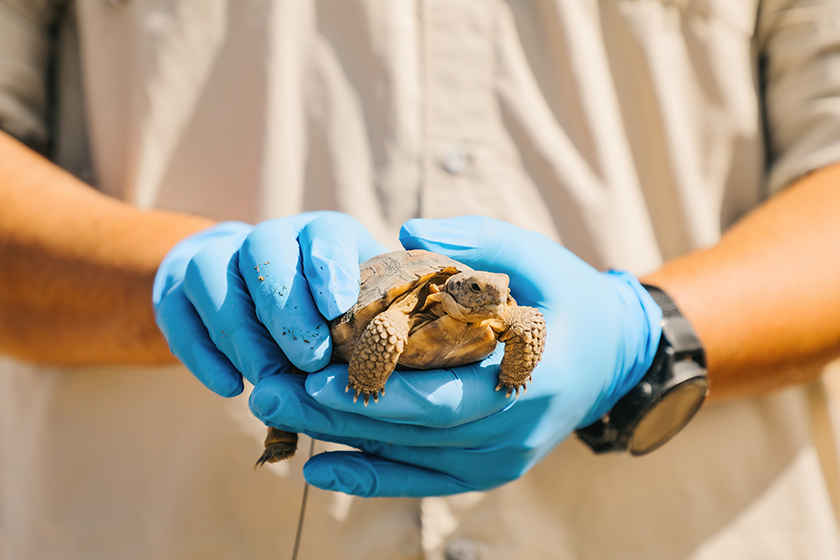
Headstarting Desert Tortoise Hatchlings
To give critically endangered desert tortoises (Gopherus agassizii) a better chance of survival in the wild, The Living Desert partners with the San Diego Zoo Wildlife Alliance (SDZWA), Edwards Air Force Base (EAFB), and United States Geological Survey (USGS) in an innovative headstart program. In September 2022, 69 wild desert tortoise hatchlings and eggs from EAFB arrived at The Living Desert’s Tennity Wildlife Hospital. Once at the hospital, tortoise hatchlings grew to the size of three-year-olds within their first six months of life thanks to an abundant, nutrient-rich diet and warm habitat. This increase in size helps to make them less vulnerable to predation and increase their chances of surviving to a reproductive age.
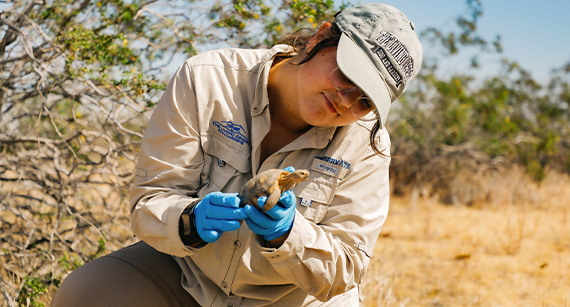
Recently, scientists have noticed an absence of young and juvenile desert tortoises in the wild with only about five percent of hatchlings surviving to reach sexual maturity. Using a technique called headstarting, a tool used with species for whom surviving through their youngest life stages can greatly increase their chances of reaching adulthood, The Living Desert provides the tortoises with the appropriate environmental conditions to grow about four to five times as fast as they would in the wild.

The headstarting program presented scientists with the unique opportunity to learn more about the youngest age class of desert tortoises. The program timeline is as follows:
- April-June 2022: At Edwards Air Force Base (EAFB), San Diego Zoo Wildlife Alliance (SDZWA) ecologists used trackers and mobile x-rays to locate adult female desert tortoises with eggs.
- Mid-Late August 2022: At the EAFB outdoor rearing facility, an unexpected heatwave necessitated the eggs and hatchlings be evacuated and moved to The Living Desert ahead of schedule.
- September 2022: At The Living Desert’s Tennity Wildlife Hospital, incubators allowed eggs to hatch safely. Tortoises lived in a temperature-controlled environment and were given a nutrient-rich diet to help growth rates.
- March 2023: Transported the tortoises to EAFB outdoor rearing facility. For six months, tortoises re-acclimatized to the desert and learned predator avoidance behaviors.
- September 2023: At EAFB, before releasing the hatchlings, radio trackers are attached to their shells to monitor dispersal, survivability, and habitat use.
Scientists were able to test behavioral traits and thermal preferences amongst the tortoises to discover what role the traits and climate change may play in predicting habitat use, movement, and survival of the animals once they are back in the wild. In this way, behavior and climate models can inform or shape conservation practices to be more effective.
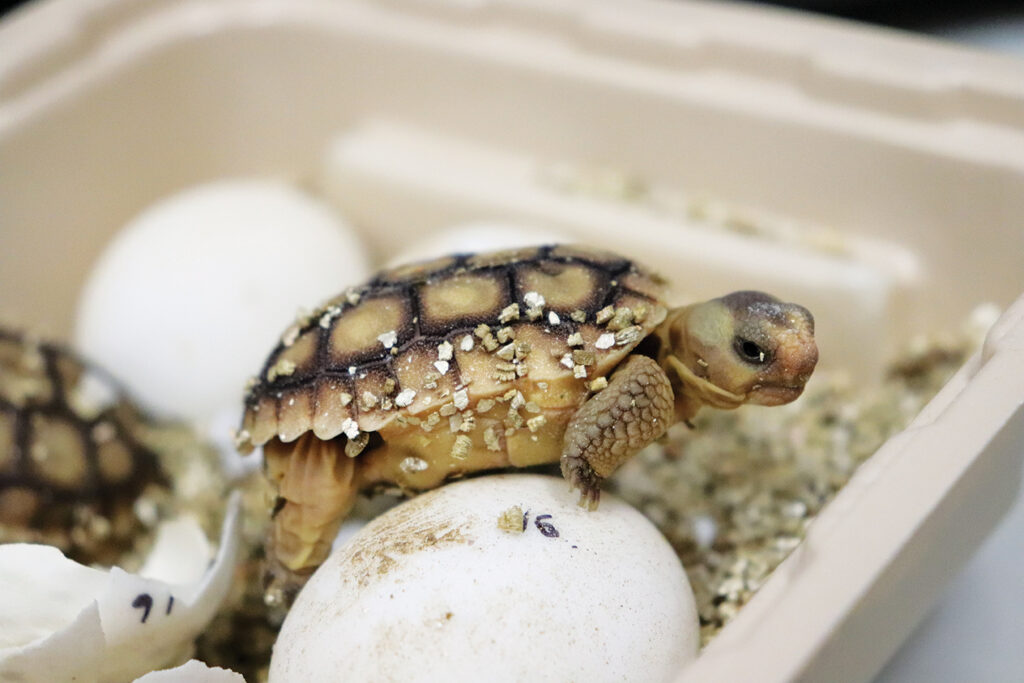
Once trials were completed and the hatchlings were large enough, they returned to the outdoor rearing facility at EAFB for another six months to re-acclimatize to the desert. SDZWA staff trains the hatchlings, teaching them to be wary of some of their top predators, specifically ravens and coyotes. Once training is complete, scientists attach radio trackers to the tortoises’ shells and release the hatchlings back into the desert on Edwards Air Force Base. The radio trackers will allow scientists to monitor the dispersal, survivability, and habitat use of the hatchlings once they’re released. The next cohort of hatchlings arrived at the Zoo in September 2023, bringing the headstart program full circle!
Caring for the desert tortoise hatchlings for six months and seeing their impressive growth has been an incredible experience that is only made better with the knowledge that we are directly supporting this keystone species.
Lou Thomas, Lead Conservation Biologist
Your support fuels groundbreaking conservation efforts like the headstarting desert tortoise hatchling program, directly contributing to the survival of this keystone species. Donate now to make a difference.
